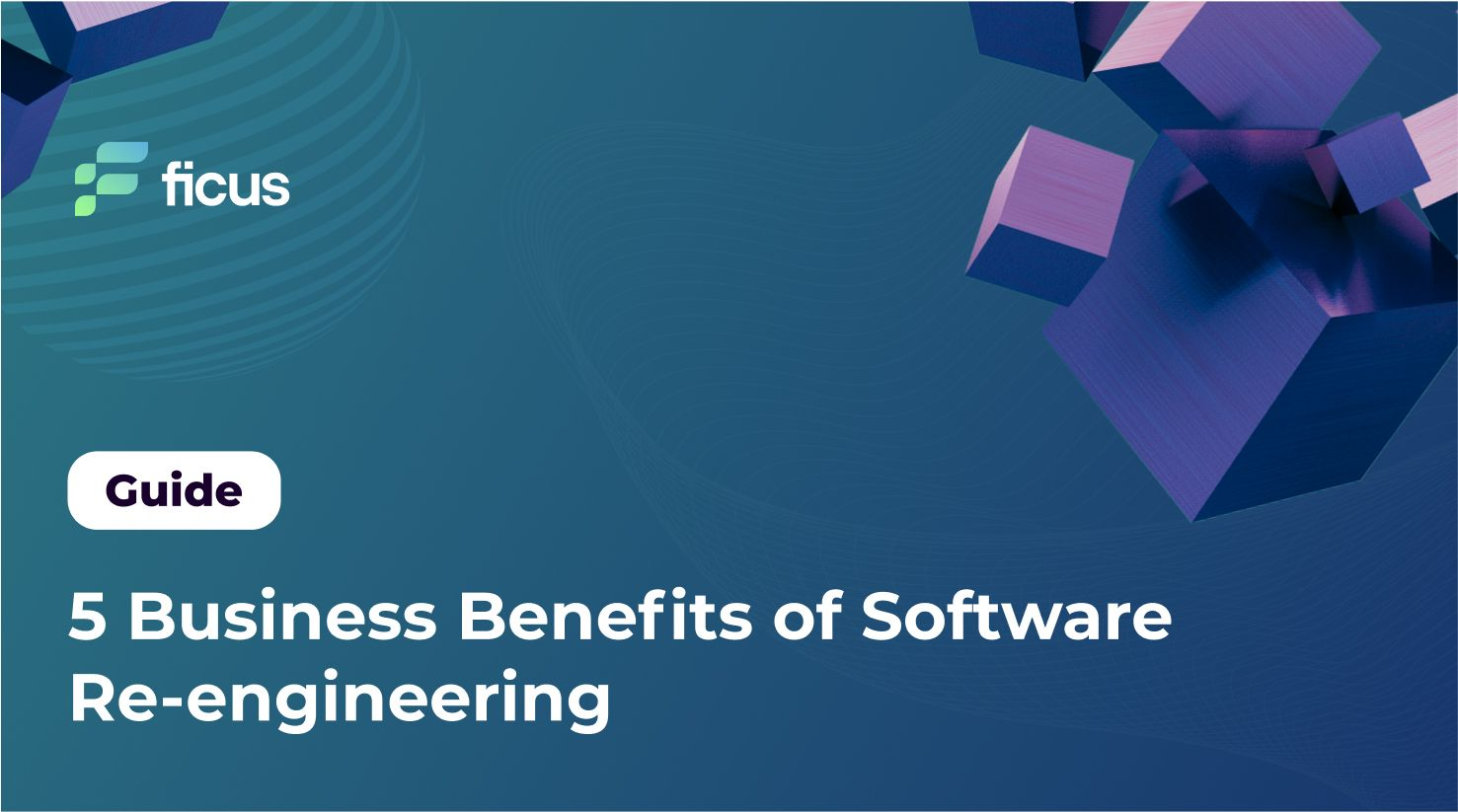In an ever-changing digital landscape, companies face unprecedented challenges and opportunities. Businesses are resorting to re-engineering, understanding all benefits of software re-engineering, to survive and prosper in this changing climate. And then, events take place on two different levels of abstraction. At the business level, software re-engineering benefits are focused on a business process to make changes that increase competitiveness in a certain aspect of the business. Re-engineering, at the software level, looks at applications and information systems to rebuild or redesign them to reflect improved quality. In this article, we will talk about the benefits of software re-engineering and how they affect your business and product.
- Software re-engineering streamlines operations, reducing maintenance costs and labor expenses.
- Re-engineering enhances efficiency, saving time and resources in project completion.
- Re-engineering minimizes errors, lowers business risks, and prepares for future changes.
How Does Software Re-Engineering Work?
Let’s start with a well-known scenario: the application serves and satisfies the needs of the company’s business for ten or fifteen years. Of course, during this time it was adjusted, adapted, and improved many times. Teams tackled this task with the best of intentions, but good software development practices were always pushed to the back burner (due to the urgency of other issues).
Now the application has become unstable. It still works, but every time you try to make a change, there are serious and unexpected side effects contradictory to software re-engineering benefits.
And it is during such a period that you should turn to software re-engineering benefits. It is the process of analysis, modification, and improvement of the existing software system to increase its functionality, efficiency, and security.
Don’t fear the unknown; re-engineering is the bridge to the future we have yet to explore.
Rosabeth Moss Kanter
This is an increasingly necessary practice in an ever-changing technological environment that requires companies to adapt to new market and user demands and pay attention to benefits of software re-engineering.
Software re-engineering benefits and the process does not involve creating a new system from scratch, but rather using the knowledge and experience accumulated in the original system and applying best practices and methodologies to optimize it. This process has three stages.
1. Reverse engineering
It is the process of building specifications at a higher level of abstraction from the source code of a software system or any other product (any other design element can be used as a starting point, etc.). These specifications can be reused as software re-engineering benefits to build a new system implementation using, for example, forward engineering techniques.
Types of reverse engineering
- Reverse data engineering: applied to some database code (application, SQL code, etc.) to obtain relational models or to a relational model to obtain an entity-relationship diagram.
- Process logic or reverse engineering: When reverse engineering is applied to program code to discover its logic or to any design document to obtain analysis or requirements documents.
- Reverse engineering of user interfaces: It is used to maintain the internal logic of the program, to obtain the models and specifications that served as the basis for its construction, and to take them as a starting point in direct engineering processes. This enables the realization of software re-engineering benefits.
2. Restructuring
Software refactoring modifies the source code and/or data in an attempt to adapt it to future changes. It frequently concentrates on the specifics of each module’s architecture, as well as the local data structures established within modules. It makes innovative software re-engineering benefits even more attractive for businesses.
The advantages of restructuring are:
- Higher-quality programs with better documentation and less complexity, and adapted to modern software engineering practices and standards.
- This reduces frustration among software engineers who have to work with the program, thereby increasing productivity and facilitating learning.
- Reduces the effort required to carry out maintenance activities.
- Software re-engineering benefits make it easier to test and debug the software.
- Restructuring occurs when the basic architecture of the program is intact, even if its technical innards need tweaking. It starts when there are large parts of the software that are still useful and only a subset of all the modules and data that require significant modification.
3. Forward engineering
Forward engineering, also known as reconstruction or remediation, takes advantage of existing software to gather design knowledge and then rebuilds or modifies an existing system to raise its overall quality. In most cases, software re-engineering re-implements the functionality of an existing system, adding new features and/or improving overall performance.
Maximize the potential of your business with Ficus Technologies!<br>
Contact UsSoftware Re-Engineering’s Benefits
Software Re-engineering Cost
Usually the main benefits of software re-engineering lay in its simplicity and efficiency providing the company with a more cost-effective approach. In this way, all tasks that do not add value and do not optimize processes are eliminated. As a result, there will be a reduction in the costs required to maintain the software (for example, optimal use of available resources or saving employees’ time).
In addition, benefits of software re-engineering involve the ability of automation of many processes, so the number of workers required to perform them is reduced, generating a reduction in labor costs.
Improved Performance
One of the main benefits of software re-engineering is that it can help you streamline your operations, leading to greater efficiency. By choosing software re-engineering benefits, you can reduce the time and resources needed to complete an iteration or project. There’s no doubt that these software re-engineering benefits will enable you to better service your consumers in addition to saving you money.
Reducing business risks
There is a high risk involved in redesigning business-critical software. Mistakes can be made in the specification or for issues to occur during development. Delays in implementing new software can mean business losses and incur additional costs. Also, the next among the benefits of software re-engineering is that this approach significantly reduces the risk of error, since the work is already carried out on a stable, tested, and developed basis.
Preparation of the basis for further changes
By introducing re-engineering into your development processes, the foundation is laid for further modernization of your product. That is, such a structure is being built that is ready for improvements or changes at any moment. Thanks to this, among the many benefits of software re-engineering, the team will need less time and resources, for example, to create an update or fix bugs.
Reverse engineering as an integral part of the re-engineering
Also, among the benefits of software re-engineering, reverse engineering can be singled out, which greatly simplifies product life cycle support. Retrofit existing software using reverse engineering. This will give you the boost you need to implement new features and test the security of your software.
Conclusion
In the digital era, process re-engineering and software re-engineering benefits are becoming a critical strategy for business adaptation, development, and prosperity. By harnessing the power of digital technologies and software re-engineering benefits, organizations can build a strong foundation for their own sustainable growth and success. And in addition, it is worth remembering that product modernization expands the capabilities of your software product and helps it perfectly meet all new business requirements. Ficus Technologies, with its expertise in software re-engineering, offers businesses a transformative solution to navigate the dynamic digital landscape.
As a rule, one of the main benefits of software re-engineering is the possibility of normal functioning in the re-engineering process. However, you should be aware that the ability to work during the re-engineering process may depend on several factors, such as the scope of the changes made and the planning strategy.
It is worth saying that measuring the success of the project and all software re-engineering benefits is not a difficult task. First of all, the success and main benefits of software re-engineering are measured by such indicators as return on investment, reduction of defects and user satisfaction.








